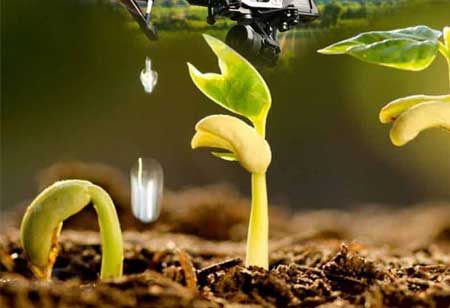Thank you for Subscribing to Agri Business Review Weekly Brief
New Technologies Improving the Agriculture Landscape

By
Agri Business Review | Tuesday, June 29, 2021
Stay ahead of the industry with exclusive feature stories on the top companies, expert insights and the latest news delivered straight to your inbox. Subscribe today.
As digital technologies evolve, agricultural technologies are also growing at a fast pace, promoting cost-effective, smart, and sustainable practices.
Fremont, CA: The use of digital technologies in precision agriculture has changed the way farmers handle crops and manage fields in recent years. It is not important to be an expert to recognize how technology has altered the concept of farming, making it more profitable, efficient, safe, and simple. As a result, the ever-evolving digital agriculture provides enormous benefits to modern farms.
GIS-Based Agriculture
As fields are location-based, GIS software has become a tremendously beneficial tool in precision farming. Farmers can use GIS software to map current and prospective changes in precipitation, temperature, crop yields, plant health, and so on. It also permits the use of GPS-based treatments in conjunction with smart machinery to optimize fertilizer and pesticide application; because farmers no longer have to treat the entire field but simply treat specific sections, they can save money, effort, and time.
Satellite-derived data
Predicting yields and doing near-real-time field monitoring with satellite data in service to detect a number of risks has never been more manageable. The sensors can provide imagery in various spectrums, allowing the use of a variety of spectral indices such as the Normalized Difference Vegetation Index (NDVI). NDVI detects vegetation content, the number of wilting plants, and general plant health. The Canopy Chlorophyll Content Index (CCCI) is next, which aids in fertilizer application. The Nitrogen concentration is then detected using the Normalized Difference RedEdge (NDRE). Finally, the Modified Soil-Adjusted Vegetation Index (MSAVI) is intended to reduce soil background impact during the early developmental phases of plants; the list goes on.
Drone data
Farmers may define crop biomass, plant height, weed presence, and water saturation on specific field regions with great precision with the use of drones. In comparison to satellites, they provide better and more accurate data with higher resolution. They deliver crucial information even faster than scouts when they are managed locally. Drones are also regarded as unequaled aides in the struggle against insects; the invasion is stopped by applying insecticide to hazardous areas using drones, all while decreasing the possibility of direct exposure resulting in chemical toxicity.





